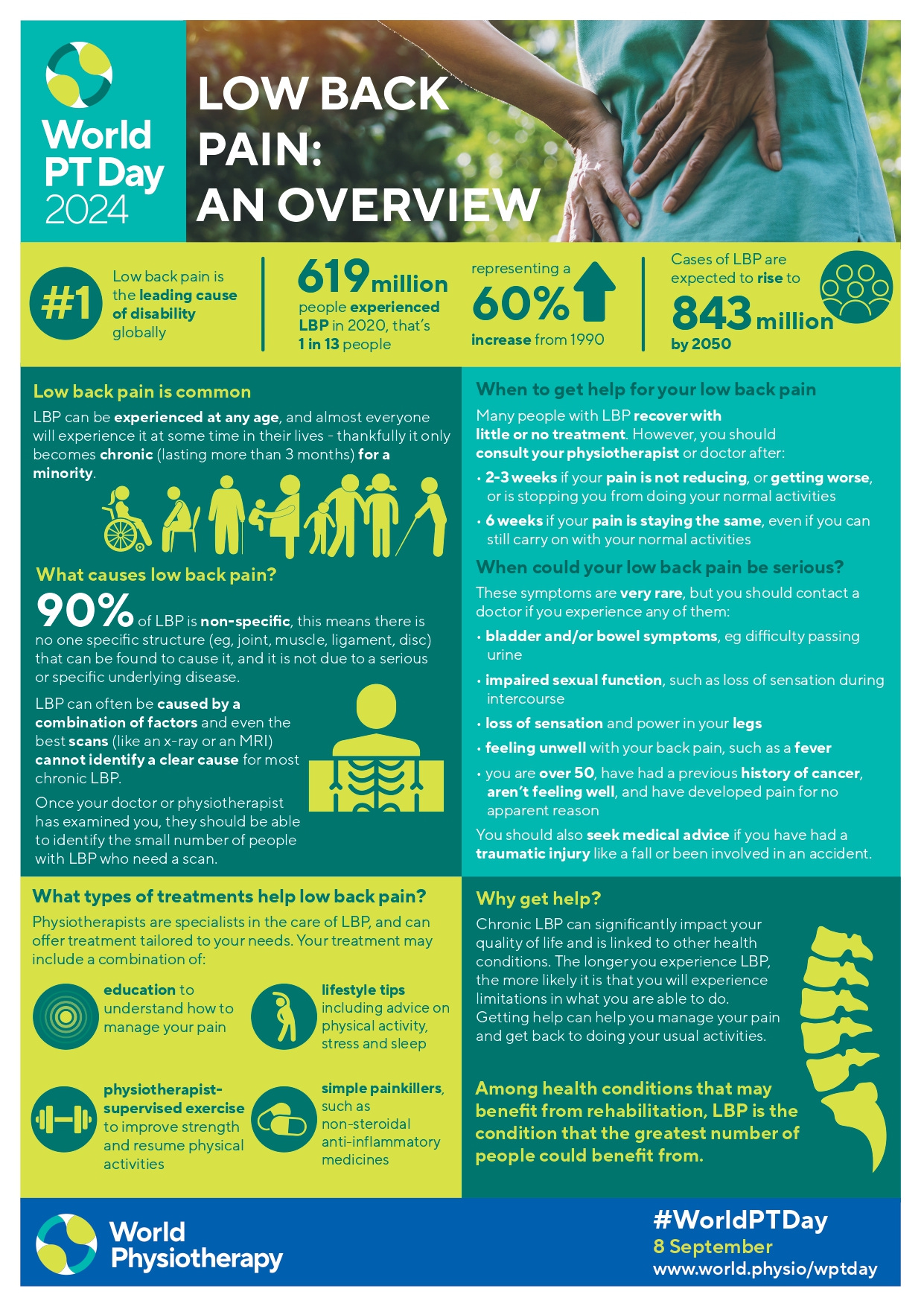This year the theme for WCPTs physiotherapy day was low back pain. I am pretty sure no one has read the brochure the association has published.
The document states that the low back pain we treat is non-specific, meaning the exact cause of the pain cannot be determined.
Typically, we name diseases based on their pathology. For low back pain, we commonly use the term "lumbar spondylosis," which assumes that degenerated spinal joints are the cause. However, we now understand that these joint changes are often incidental. All joints and biological systems naturally degenerate with age—this isn't a disease, but simply part of aging. So, referring to low back pain as "lumbar spondylosis" is somewhat misleading.
You might think it's just a name, so why does it matter?
The problem lies in how words shape our thinking. By labeling something as a degenerative disease like spondylosis, we start searching for signs of joint degeneration, leading to an overuse of unnecessary X-rays and MRIs. Furthermore, treatments are based on the idea of "preserving" the joints, which leads to advice like "don’t flex, don’t bend, don’t drive." This approach stems from the mistaken belief that low back pain is always caused by spondylosis.
Even back in my college days, the sacroiliac joint was often treated as the villain. It's as absurd as claiming that headaches are caused by misaligned sutures in the skull—completely implausible.
Then there are the "advanced" practitioners.
These are the people who, when faced with scientific uncertainty or gaps in knowledge, fill those gaps with appealing nonsense. Since many of us have a poor understanding of science, we tend to accept it without question.
One of the most popular pieces of this appealing nonsense is the concept of “trigger points.” Unfortunately, an entire generation of physical therapists has been spending their time vigorously massaging these so-called trigger points. My generation, along with the one before it, worked hard to move away from the idea of physical therapists being nothing more than massage therapists. But these individuals have dragged us right back into that outdated mindset.
But is it really a problem? Does a patient recover more quickly when I rub them than when I don’t? Of course not, because the issue isn't with the trigger points. Sure, patients might feel better immediately after a massage, but that’s just the short-term effect that any massage provides—not because it addresses the real pathology.
There are some people who will put the joint in the right place- as they are poorly aligned or subluxed. This is not just poor science, but pseudoscience. (if you want to learn this nonsence you can join the up coming chiropractor course in your city and start posting reels).
if you are more advanced, you find more imaginary things like posture, alignment, shorthened muscles, and many more. Sadly none of it has been proven to be pathology or even plausible.
Summary of Etio- Pathology:
Proposed pathologies include poor posture, misalignment, subluxation, trigger points, motor control issues, degeneration of spinal joints (including discs), piriformis syndrome, internal derangement syndrome, and lower cross syndrome. Unfortunately, most of these are completely wrong, and the rest are wrong.
The last word:
what causes back pain?
If i rule out red flags-
I dont know, hence i will call them Non- specific low back pain. We may find the answer in coming decades, until then, we have to call them Non- specific back pain.





Thankyou sir for highlighting crucial issue in low back pain.